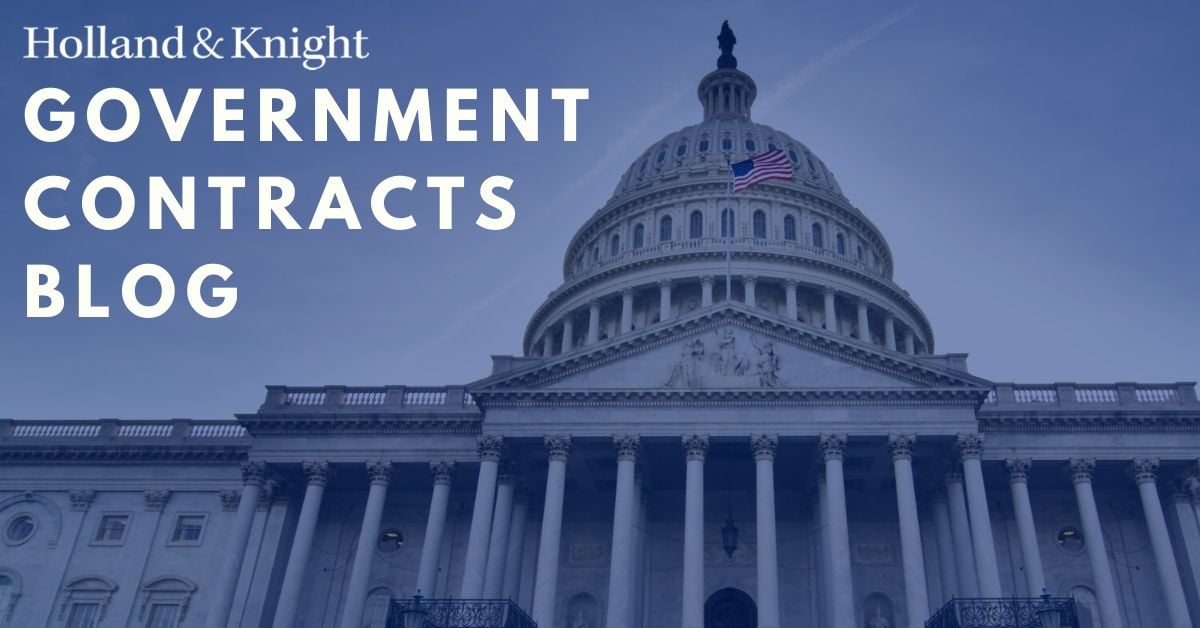DOL Releases Proposed Rules to Implement $15 Minimum Wage for Federal Contractors

The U.S. Department of Labor (DOL) released proposed regulations that would implement President Joe Biden's Executive Order (EO) that would establish a $15 minimum wage for a wide swath of contractor employees.1 While final regulations are due to be released on Nov. 24, 2021, the rule is not expected to be implemented until Jan. 30, 2022, though agencies may begin implementation prior to that. Because of that, prime and subcontractors should understand the proposed regulations now and plan to implement the new minimum wage prior to the formal release date. In addition to raising the minimum wage, the proposed regulations also rescind EO 13838, which had exempted recreational services and equipment rental contracts from President Barack Obama's previous EO establishing a minimum wage of $10.10 that was raised every year consistent with the Consumer Price Index (CPI).
DOL noted that the payment of a $15 minimum wage is a condition of payment to the contractor. See 86 FR 38823. The $15 minimum wage will be updated annually depending on the CPI for Urban Wage Earners and Clerical Workers.
The Federal Acquisition Regulatory Council is expected to release a separate Federal Acquisition Regulation (FAR) rule that will be applicable to FAR-based contracts. While the DOL's proposed rule will be applicable to non-FAR-based contracts, it will guide the forthcoming FAR rule.
No matter whether a contract is FAR-based or not, the proposed regulations will be applicable to:
- contracts subject to the Service Contract Act (SCA; 41 U.S.C. 6701 et seq.)
- contracts subject to the Davis-Bacon Act of 1931 (DBA; 40 U.S.C. 3141 et seq.)
- concession contracts (no matter whether they are covered by the SCA)
- contracts "in connection with property or land and related to offering services for Federal employees, their dependents, or the general public"
The wages for the above categories also are subject to the SCA, DBA or Fair Labor Standards Act.
The proposed regulations would expand the geographic scope of the new minimum wage from the previous iteration to also cover Puerto Rico, the U.S. Virgin Islands, Outer Continental Shelf lands as defined in the Outer Continental Shelf Lands Act, American Samoa, Guam, the Commonwealth of the Northern Mariana Islands, Wake Island and Johnston Island in addition to contracts being performed in the 50 states and the District of Colombia. Independent federal agencies also will be included even though they were not included in the previous EO.
Like the previous version of the minimum wage regulations, DOL proposed that workers employed "in connection with" a covered contract and spend at least 20 percent of their time doing so will be covered by the minimum wage. DOL gives some examples of "in connection with" in the regulatory discussion keying on employees who work on time records for contract employees (as an example). Workers who mow the lawn outside a corporate headquarters, however, would not be covered. DOL states that workers are working "in connection with" a covered contract if they are "necessary to the performance of a covered contract but who is not directly engaged in performing the specific services called for by the contract itself." See 86 FR 38830.
For General Services Administration (GSA) Schedule contractors, DOL states that task orders from contracts issued after Jan. 30, 2022, will be subject to the new minimum wage. GSA Schedule contractors should note that when GSA issues a modification, task orders issued after that time may require the new minimum wage (possibly depending on the wage determinations that GSA utilizes).
In the discussion that preceded the proposed rule, DOL stated that the $1.466 billion of increased wages is not part of the cost calculation on contractors because the cost for the higher wages is expected to be passed on to the contracting agencies. The cost of familiarization and implementation of the rule, however, is expected to be $17.2 million in the first year and $0 thereafter. The $0 figure ignores the fact that contractors will have to update the minimum wage annually depending on the CPI.
Like most regulations, contractor compliance will be dependent on the contracting agency inserting the proper clause into the agreement. Contractors should not pay the new minimum wage until it is mandated by their contract because the opportunity to gain a price adjustment based on the minimum wage could be lost. That being said, if DOL concludes that the clause was inadvertently excluded by the contracting agency, DOL may require the retroactive insertion of that clause. In that instance, the contractor will be required to provide back wages and seek a price adjustment from the contracting agency.
DOL has a range of tools at its disposal to ensure compliance, ranging from withholding of payments to a three-year debarment, so it is beneficial for contractors to monitor the development of these rules.
Holland & Knight will continue to monitor this EO and provide updates as developments warrant.
Notes:
1 DOL anticipates that 327,300 contractor workers will be impacted by this EO.
